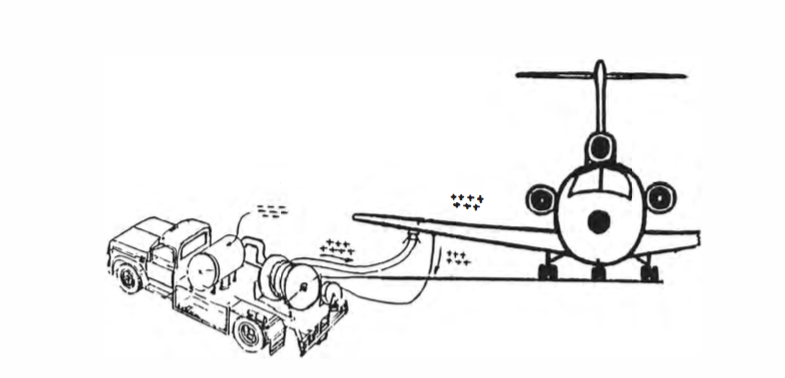
No. 40 BONDING vs GROUNDING May 1992
Its embarrassing and frustrating to learn that a life-long belief is incorrect or in some way not founded on scientific facts. When I was very small. my parents refused to let me go swimming for an hour after I had lunch- leg cramps would surely get me. Two hundred years ago people would not eat tomatoes because they were known to be poisonous. The earth was once known to be flat.
And now we are faced here in America with the proven fact that grounding an air craft to get rid of electrostatic charges caused by refueling is not the safest way to deal with the problem. The rest of the world, and our own scientific community has somehow known this for years but it wasn't until two years ago that we had to face the facts when the National Fire Protection Association issued their most recent revision of Bulletin 407 on August 17, 1990. It was a complete reversal; after having specified grounding as well as bonding between the fuel servicing vehicle and the aircraft since the 1960's, they said it was safer not to ground. Let's examine the issue and try to understand why NFPA made this astonishing change.
When an aircraft is being fueled, an electrostatic charge develops that can discharge and cause a fire if fuel vapors are also present. The primary cause of the electrostatic charge is the filtering equipment, usually on a truck or hydrant servicer. And now you are saying -- ''but charges can develop without filtering and are caused by pumping or by the fuel passing through pipes and valves''. And you are correct-- BUT the real culprit by a factor of 100 to 1 is the filter, monitor or filter separator.
Let's think about what an electrostatic charge really is. Basically, it is pluses( + + +) that are physically separated from minuses(---). If you connect a wire or any other conductor between those 2 places, a current flows and the pluses immediately cancel the minuses so that no net charge remains.
So now let's think about what happens during fueling. Flow begins through the filter with a separation of the pluses and the minuses. One or the other(pluses or minuses) go along with the fuel into the aircraft and the other stays behind in the filter creating a large voltage difference. If the fuel was a conductor, this would not happen.
The charges in the filter travel, in time, to the filter vessel casing and into the vehicle frame. The charges that are carried away in the fuel to the aircraft ill migrate to the airframe.
And now what do you have? You have the truck all charged up with minuses and the airplane all charged up with pluses (or vice versa). You could ground the truck and get rid of that charge. You could ground the aircraft and get rid of that charge. When there is no voltage difference, there is no charge.
A better way to deal with the whole problem is simply to connect the truck and the airplane together with a bonding wire. Now the pluses on the airplane go back to the truck to cancel the minuses and you have no net charge.

The practice in the USA has been to bond and ground but recent tests have proven that if the aircraft and the truck are bonded, a grounding wire carries no charge at all. This is why NFPA 407 0 longer specifies grounding for safety during aircraft fueling.
NFPA does not mean that an aircraft should not be grounded for electrical reasons or for maintenance. Personnel who have those responsibilities must make their own decisions about grounding and provide the PROPER SIZE of cable for their purposes. A typical cable used for electrostatic grounding is usually far too small to satisfy electrical ground ing needs and, in fact, some have simply melted right under the aircraft where fuel vapors could be ignited . This can happen when the aircraft electrical system or the ground power unit/generator malfunction. This was a further reason for NFPA 407 to delete the electro static ground wire.
You may be thinking now that the bonding can be eliminated if the fuel has been made conductive by adding a conductivity improver. That is surely not a good idea because the fuel can never be as good a conductor as a wire. You might also argue that now that NFPA 407 specifies hose with a conductive cover, this constitutes a bond between the truck and the aircraft. NFPA 407 specifically forbids this because the wire makes a superior bond. The conductive cover provides an added factor of safety - just in case.
In conclusion, you absolutely must bond the aircraft to the source of fuel where the final filter is located. The source may be a refueler truck, hydrant servicer or a cabineted fueling station!
Grounding can become a hazard if the cable is insufficient to carry the power from electrical apparatus such as a ground power unit or generator.
Conductivity improver or conductive cover hose is not a proper solution to the problem.
Grounding only the aircraft without bonding to the refueler creates a new hazardous situation because the refueler will be left with a substantial charge.
For readers who want more information on this subject, order copy of NFPA 407 and read section 3-4 and A-3-4 carefully.
